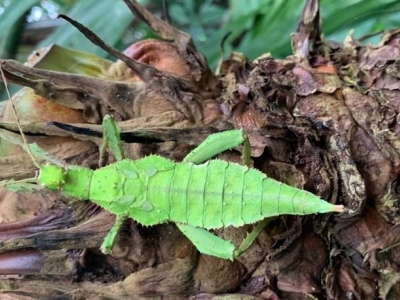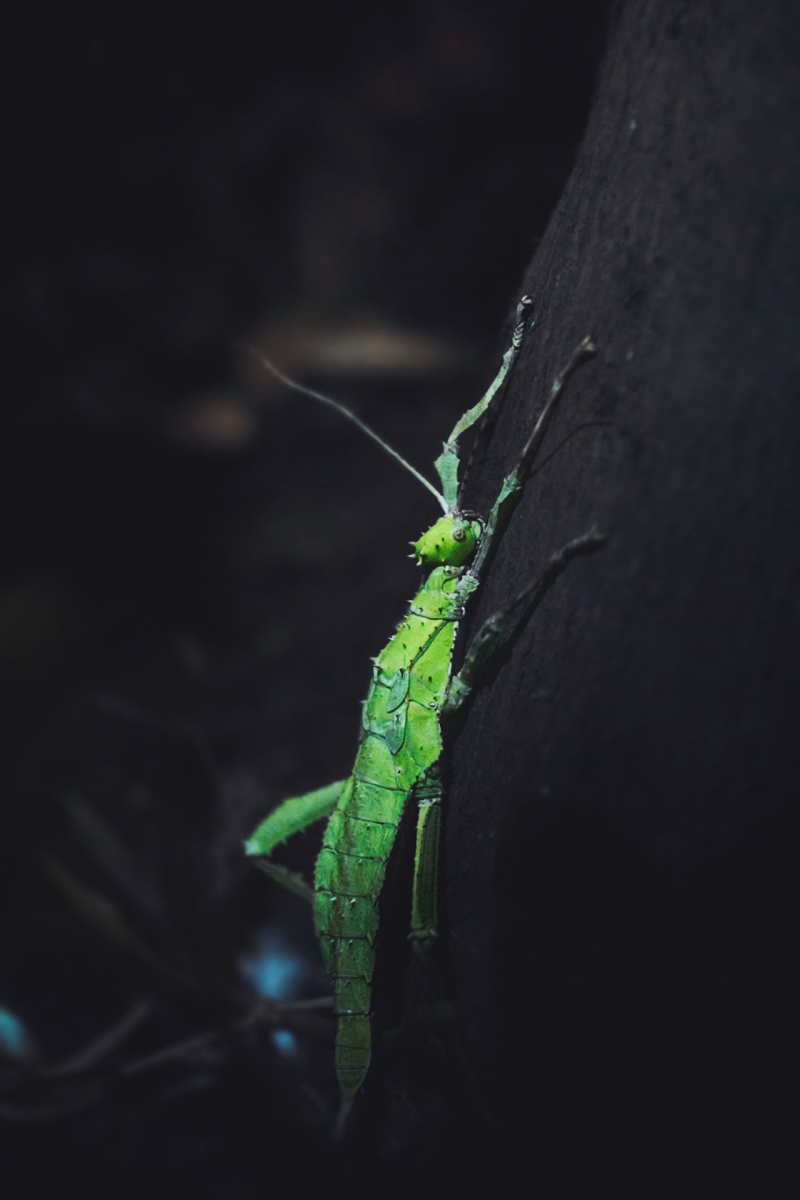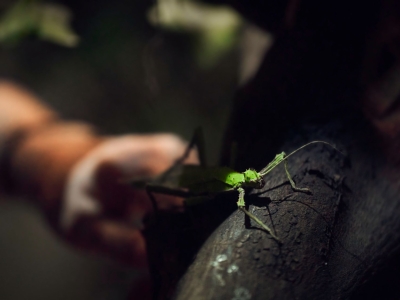Jungle nymph Heteropteryx dilatata
Animals in our sanctuary
groep Woudnimfen

The jungle nymphs come from a Dutch Zoo and found their new home at De Zonnegloed.
Where does he feel most at home?
The jungle nymph comes from the Malay Archipelago. There it was found on the Malay Peninsula, in Thailand, Singapore, as well as on Sumatra and in Sarawak on Borneo.
What's his favourite food?
Among other leaves, those of bramble are eaten, such as blackberry and raspberry, but also oak, hazel and ivy.
Fun fact
The females are much larger and wider than the males, reaching 15 centimetres (6 in) in length and 30 to 65 g in weight, making them among the heaviest phasmids and extant insects. In addition to the typically lime green-colored females, there are also yellow and even more rarely red-brown females. Their two pairs of wings are both shortened. At rest, the green forewings, formed as tegmina, cover the somewhat shorter, strikingly pink-colored membranous hind wings, here formed as alae, however they are incapable of flight. The head, body and legs are thorny. The flattened body is provided with a number of spines, in particular along the body edges including the abdomen and the legs, and especially along the hind legs. At the end of the abdomen there is a secondary ovipositor for laying the eggs in the ground.
The much smaller males are slender and only about 9 centimetres (3.5 in) long. They have spines all over their body and legs like the females, and are usually a mottled brown colour. The hind wings cover the entire abdomen. The narrow, but only slightly shorter forewings are designed as tegmina to and have a light front edge, which gives the animals with closed wings the typical lateral stripes over the mesonotum and half of the abdomen. The fully developed hind wings are reddish and marked with a brown net pattern.
Both sexes are capable of defensive stridulation when there is danger. The colored rear wings are jerked open again and again. In addition, the animals then threaten, similar to the representatives of the closely related genus Haaniella, with raised abdomen and the attacker stretched, splayed hind legs. Upon contact, the legs snap together as a scissor-like weapon. When touched, the tibiae of the hind legs are then quickly struck against the femura, which creates an effective defense through its spines.
Adopt this Jungle nymph




